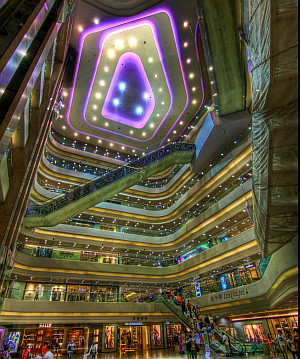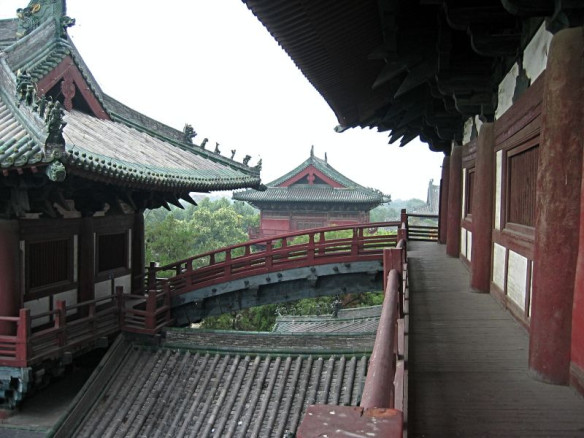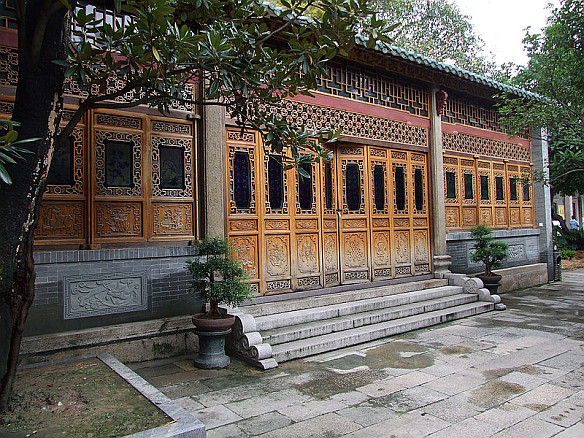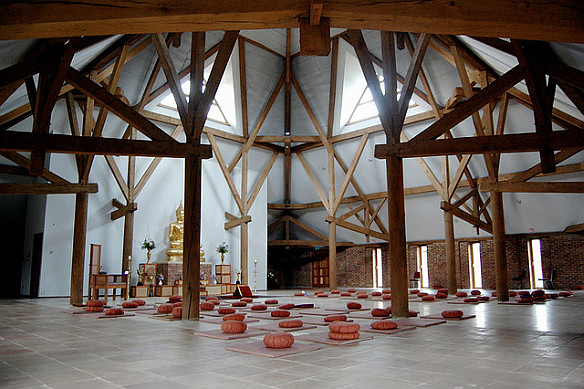A couple months ago, during a conversation about DRBU planning, Professor Mark Mancall from Stanford University posed a question: “What does contemporary Buddhist architecture look like?” He said he’d been asking people this question lately whenever he has a conversation about Buddhism, and so far, he said, no one he’d talked to seemed confident that they had an answer.
… I can’t help but notice the interplay between the spaces that I spend my time in and my own attitudes and intentions.
I’ve never studied architecture formally, but I can’t help but notice the interplay between the spaces that I spend my time in and my own attitudes and intentions. In this sense I think there’s an opportunity for anyone to have some insight into how our environment affects our minds, and how our minds in turn affect the spaces that we create. We only need to pay attention.
For myself, lately I’ve been noticing where my thoughts tend to go in my cluttered bedroom. Opening the door is a regular reminder to tidy up my mental to-do list and clear out some of the nagging tasks that seem to pile up like old mail and laundry. In contrast I notice the ease of my walks around the monastery, watering plants every few days, soaking up a little bit of the easy-going harmony of nature. And of course I notice the Buddha hall, the calm and spacious complement to my otherwise hectic mind, where the careful attention invested by the community lends the space a relaxed and appreciative atmosphere — another good reminder to slow down and put that same kind of care into other aspects of my life.
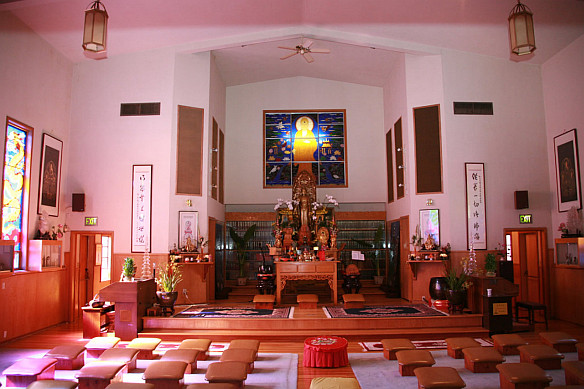
There are, of course, many other kinds of spaces in the world; and being involved in some planning for DRBU, I sometimes think about what sorts of spaces support the mind in being calm, clear, and focused — all important traits for learning. Thinking on a more general scale, I would even say that this kind of consideration is becoming more and more important to modern life in general. As the human race finds itself living in an increasingly crowded, increasingly technological world, we have an unprecedented opportunity, and also a responsibility, to make decisions about the kinds of spaces we live in, now and for future generations.
For the first time in human history, we are able to create spaces, both real and virtual, designed with the human experience in mind from the largest to smallest scales, even down to the molecule. New materials allow us more and more avenues for visual expression. With visual attention becoming one of modern society’s most precious commodities, economic pressure pushes us to fill the space with bright lights and advertisements, drawing this attention outwards towards the symbols and memes of the economy’s arbitrary values.
For people who live in cities, sometimes it’s hard to notice how all the stimulation affects us, while we are still inside of it and regularly conditioned by it. We need a little time to unplug, to be able to contrast our natural, relaxed state of mind with the mind bombarded by information and activity. We need to have a little space to breath, and a little mental space to put our minds to the task of considering the bigger questions.
In the meantime, with cities growing and modern lifestyles spreading throughout the world, what were once traditional cultural values are increasingly dictated by economic forces. At the same time more people have access to new technologies that can shape their sense environments in profound ways. As individuals in industrial societies, we each need to decide how much we are willing to put a pricetag on the little bit of mental space that is still available in urban environments. As a culture, we need to ask to what extent we are willing to put boundaries around our economic values, in order to emphasize values that may prove to be more important in the long run.
Throughout history, the design of Buddhist spaces for practice have put a high value on functionality, simplicity, spaciousness and harmony with nature. Living spaces are designed for communal living, a lifestyle which helps to support the ethical codes followed by the residents, codes which in turn support the cultivation of a focused and disciplined mind. As a result these spaces support a more focused and contemplative mind, lower stress and better health, and also more effective learning — all important aspects of historical monasteries in both eastern and western traditions.
What can the modern world learn from these kinds of values and aesthetics, and how else might they appear today?


